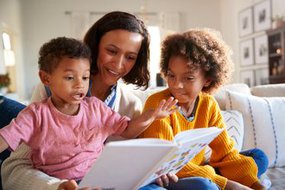
Role models are an important influence in children and young people’s lives. Our data shows that the percentage of children and young people who say they have a role model has increased over the past decade, from 78.0% in 2009 to 93.4% in 2019. This report looks at children and young people’s role models more closely to identify who they look up to, and what seeing their role model read would make them think or feel about reading.
Key Findings
Who do children and young people look up to?
- 93.4% of children and young people aged 7 to 18 had at least one role model.
- The most popular role models were mums (67.4%) and dads (60.2%).
- More than half of children (52.6%) said that they look up to a YouTuber, while fewer than 2 in 5 looked up to a sibling (38.3%) or teacher (36.5%).
How does seeing role models read influence children and young people's reading?
- More than half (52.9%) of children and young people who had a role model agreed that seeing their role model read would make them think it's okay to read.
- 3 in 10 (30.4%) children and young people agreed that seeing their role model read would make them think that reading is cool
- More than 1 in 4 (27.2%) agreed that seeing their role model read would make them think that reading would help them to pursue a career they are interested in.
Role models and their influence by demographic
- More girls looked up to people they were likely in direct contact with, such as their mum (76.0% vs 61.9%) or friends (61.5% vs 44.6%).
- More boys looked up to famous personalities such as YouTubers (57.9% vs 47.9%) or sportspeople (30.6% vs 22.0%).
- Almost half (45.8%) of boys said that they looked up to a footballer compared with just over 1 in 8 (13.2%) girls.
- The percentage of children and young people who said they had a role model decreased with age. While more than 9 in 10 of those aged 7 to 11 (95.2%) had a role model, just 3 in 4 (76.2%) of those aged 16 to 18 said the same.
Overall, parents continue to be the most important role models for children and young people. However, this report found that celebrity role models, including YouTubers, have become more prevalent than they were a decade ago. Boys’ and older students’ engagement needs particular focus to align with younger pupils that have consistently shown to be more likely to engage with, and benefit from, reading role models.